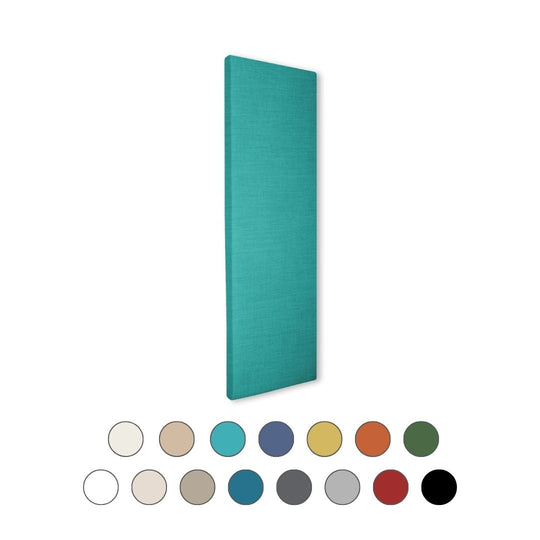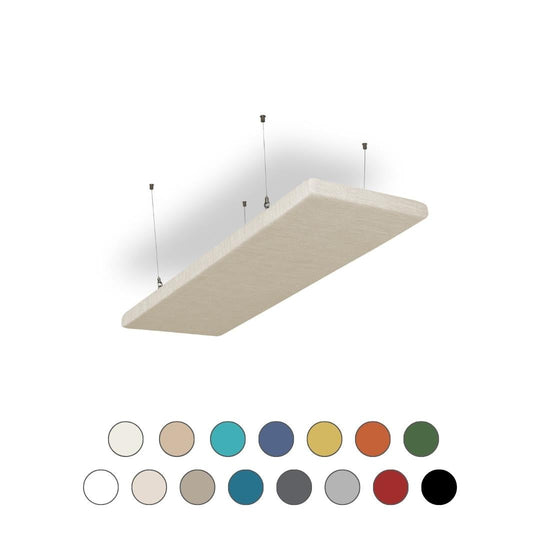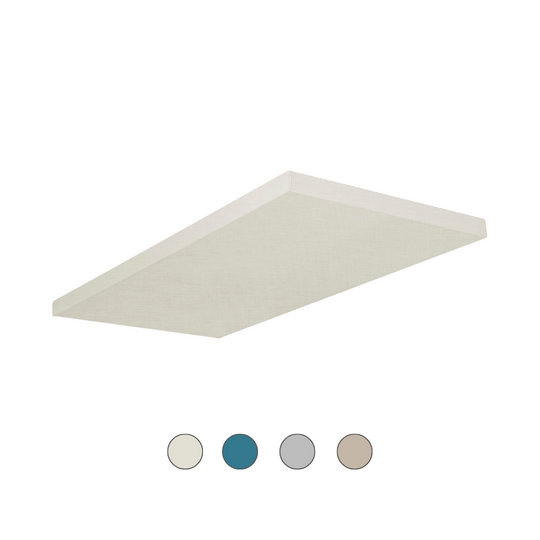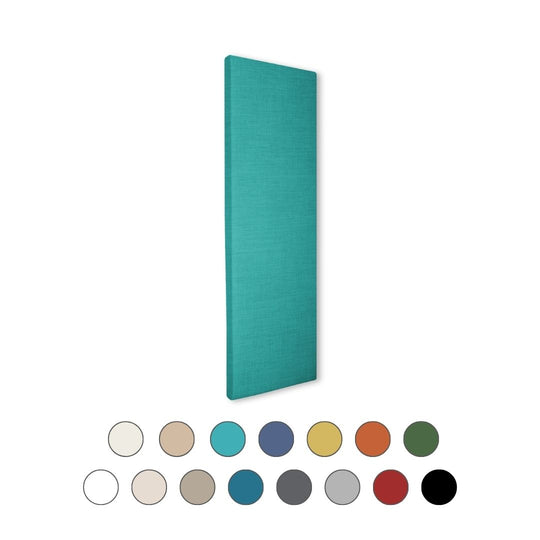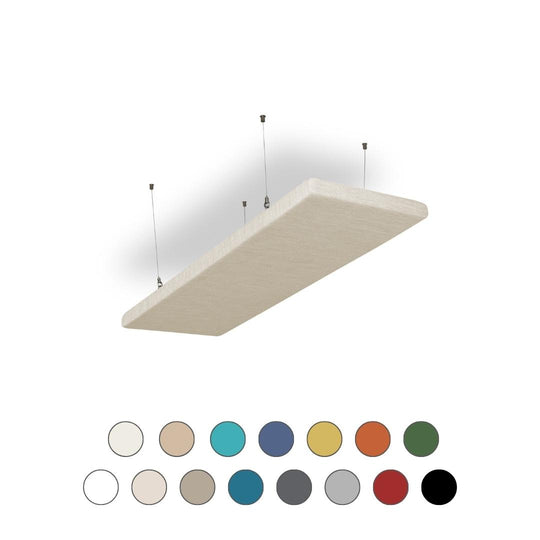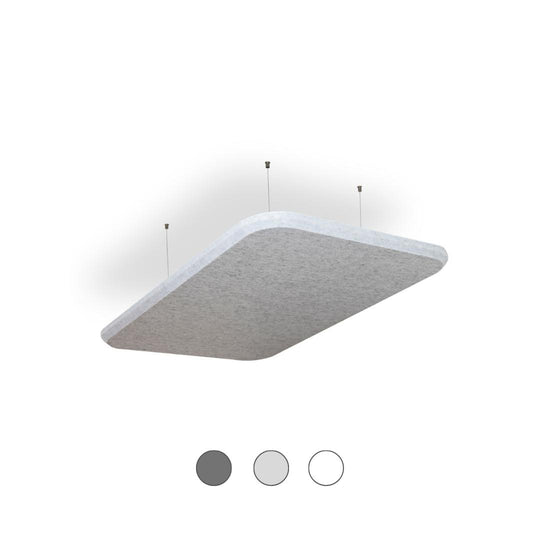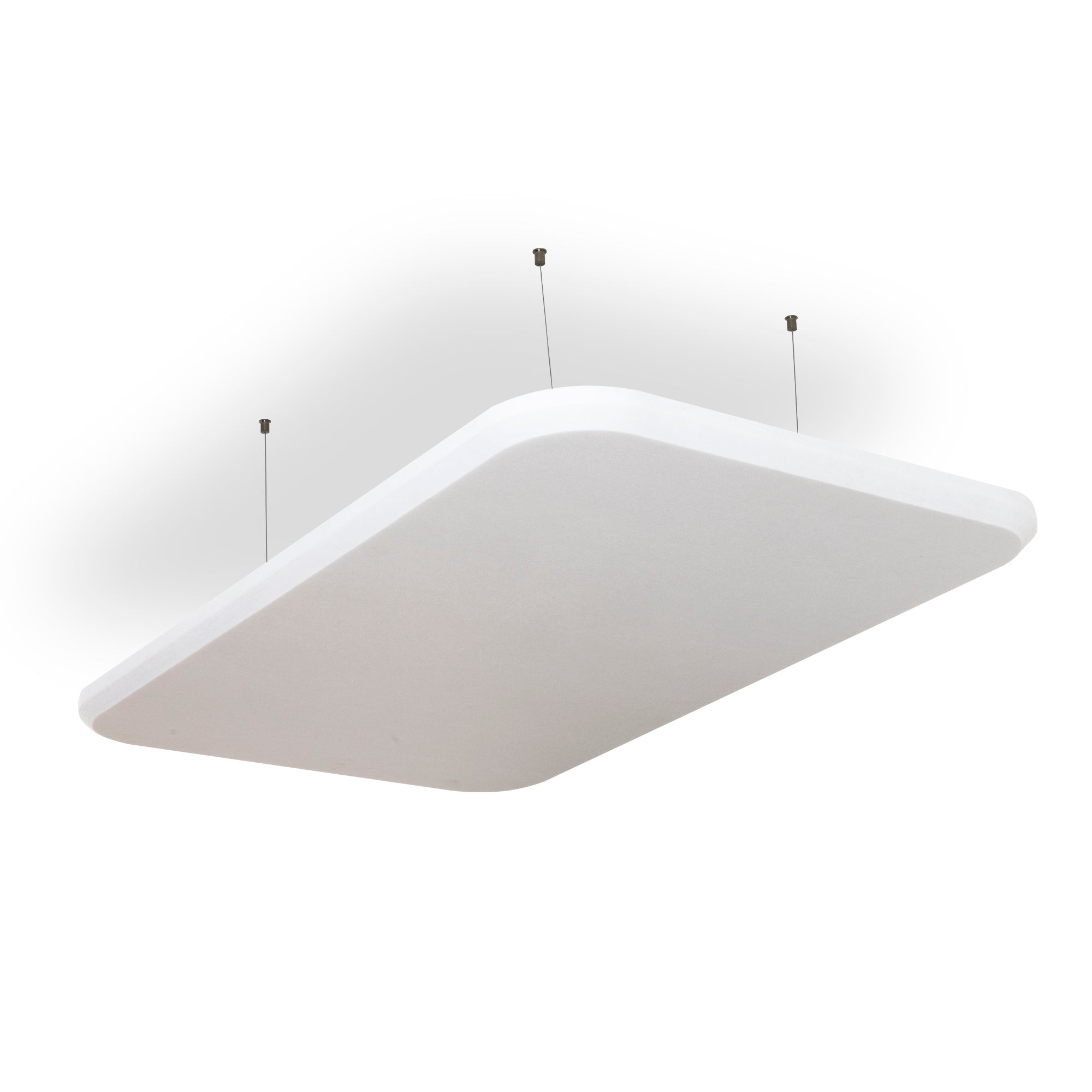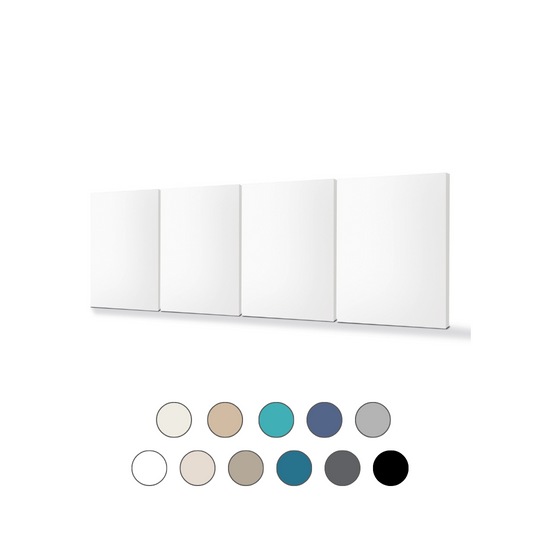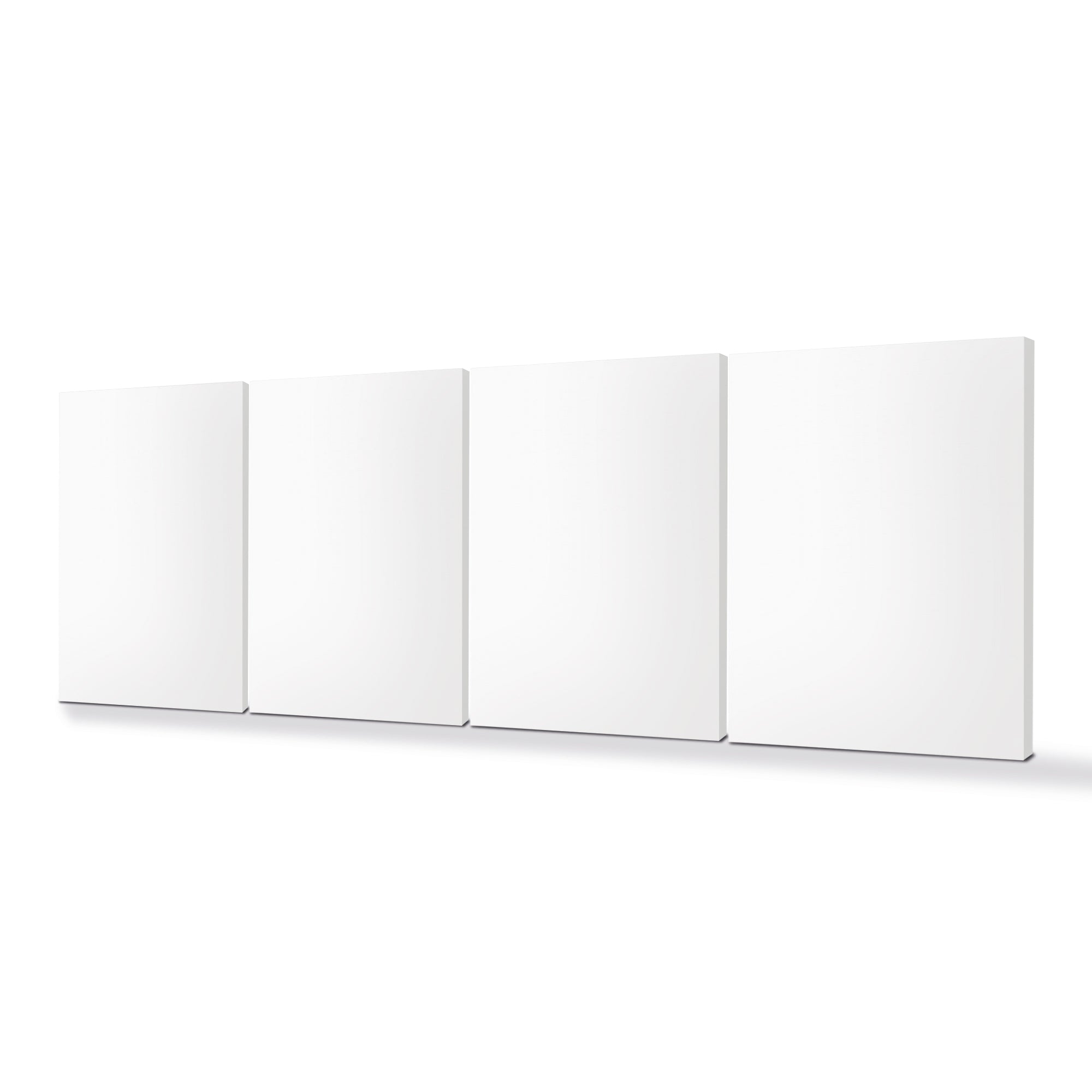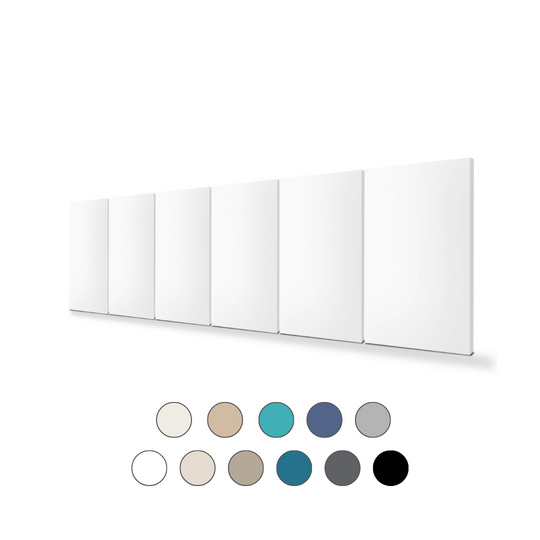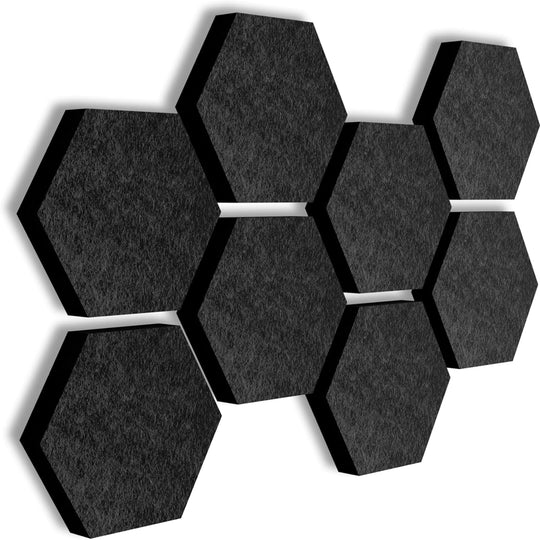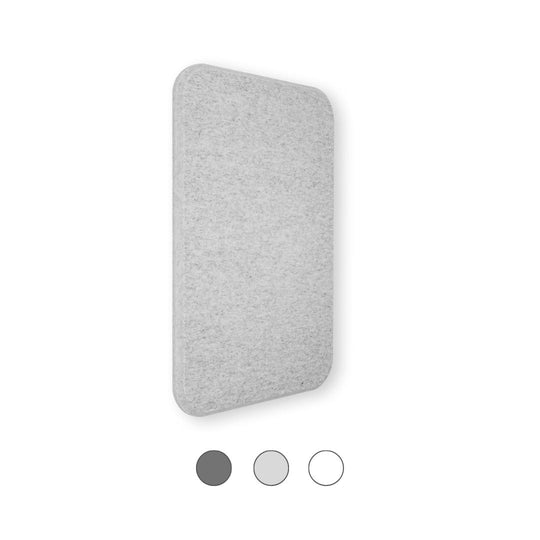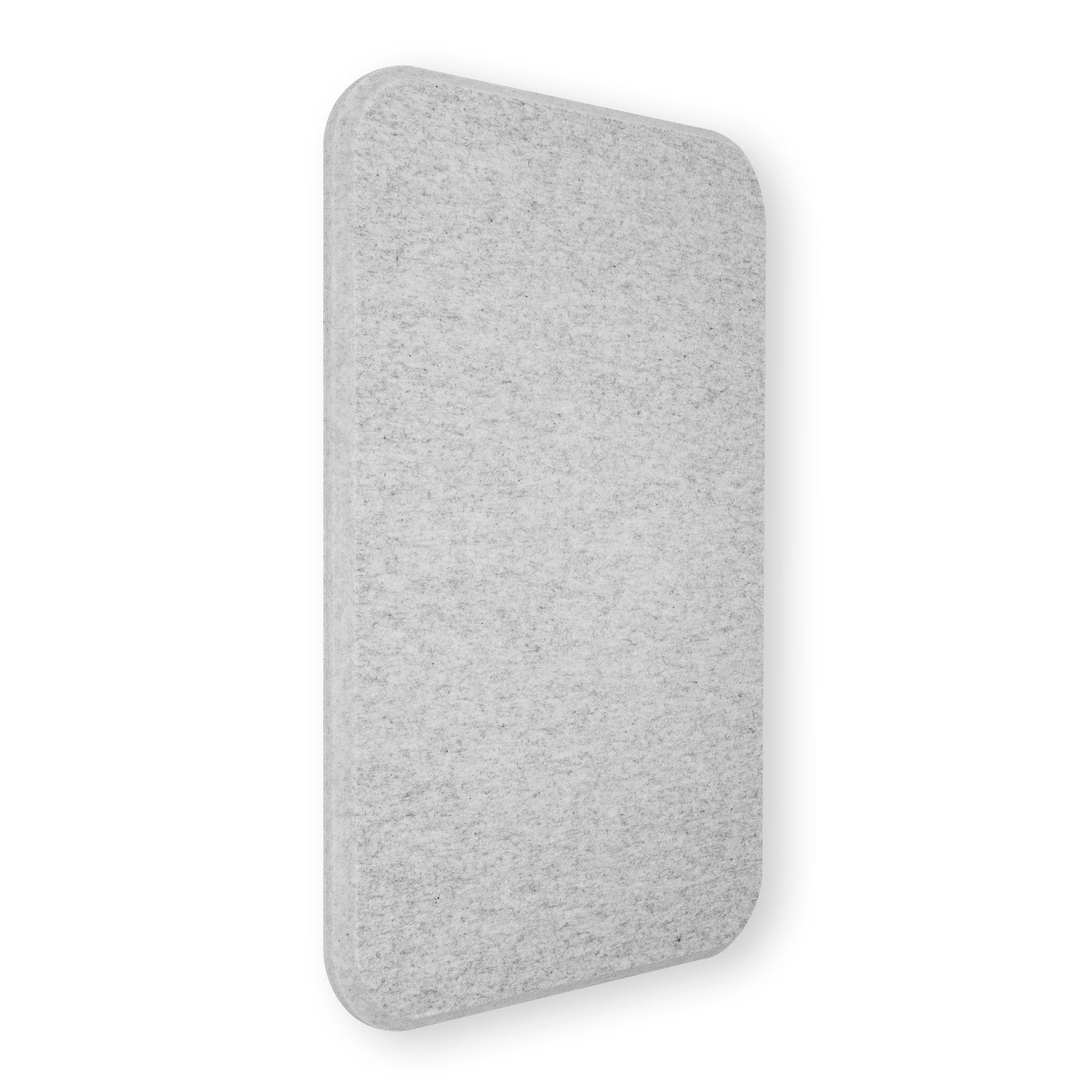HOW DO ACOUSTIC PANELS
FOR THE WALL OR CEILING WORK?
The problem when it echoes
Poor room acoustics are caused by an unchecked multiplication of sound waves. What can you do about it?
You can take structural measures, such as in large event centers. Or balance the acoustics with sound absorbers.
NOISE MAKES YOU ILL
This has a massive impact on our well-being and ours health. According to studies, the efficiency of employees in noisy office environments by 5 to 10 percent.
Permanent exposure to sound is therefore increasingly becoming a stress factor, first for the brain and then for the nervous system in general. In the meantime, tinnitus and hearing loss have become common diseases and “noise-related hearing loss” has been recognized as an occupational disease.
But apart from physical effects, the psychological ones cannot be overlooked. Constant exposure to noise can lead to lack of concentration, sleep disorders, circulatory diseases, high blood pressure, learning disabilities and even psychiatric illnesses.
A noisy environment is not to be taken lightly. Fortunately, there are simple solutions for quieter rooms and a better working atmosphere: Acoustic panels .

HOW DO ACOUSTIC PANELS WORK?
Sounds and tones propagate through the room in large or small sound waves, depending on the source. If these waves hit smooth surfaces, such as ceilings or windows, they reflect and overlap, thus creating sound energythat we perceive as noise.
Acoustic panels therefore consist of materials with a porous structure. The sound waves penetrate this material through the pores and lose energy through friction. The kinetic energy of the particles is converted into heat energy (thermal energy). However, the heat is so small that we cannot perceive it. Hardly any sound waves escape from the acoustic panels. The sound energy in the room decreases, the reverberation time decreases Acoustics get better.
PERSONAL
CONSULTATION
AUSTRIAN
PRODUCTION
30 DAYS
RETURN POLICY
SECURE
PAYMENT
THE AGONY OF CHOICE:
DO I NEED WALL PANELS OR CEILING PANELS?
Acoustic solutions are based on the one hand on the spatial conditions and on the other hand on the use of these rooms.
The important question is always: Does the sound propagate from one source or are there several sound producers from different directions?
Ideally, you have the option to install a set of wall AND ceiling panels in a room. In this way, the surfaces on which the sound can reflect are reduced all around.
However, if it is not possible to mount wall panels in a conference room, for example, it may make the most sense to hang ceiling panels directly above the conference table in order to absorb a large part of the sound energy.
In a room with very low ceilings, on the other hand, it can be an advantage to hang a few more acoustic panels on the wall and leave the ceiling free.
So always ask yourself:
Where is the sound produced and on which surfaces is it most likely to reflect?
WHAT MATERIALS ARE THE SILENT4 ACOUSTIC PANELS MADE OF?
This means that our absorbers are suitable for use in everyday environments such as open-plan offices, canteens, ordinations, school classes, conference rooms or even living rooms and children's rooms. So wherever there is a lot of talking and the spatial conditions lead to high sound energy.
We cover the acoustic panels with acoustic materials, which transmit the sound waves excellently into the core and guarantee the panels their stylish appearance.

HOW ARE ACOUSTIC PANELS ATTACHED?
The wall panels from PET fleece are attached with a Velcro system. The velcro strips are self-adhesive on the back, so all you have to do is peel off the film and stick the velcro strips to the wall. The fleece finally sticks to the Velcro side of the adhesive strips. If the plate is crooked, you can realign it at any time using the Velcro strips.
The series DIVID is mounted on the wall with double-sided adhesive tape.
The ceiling panels are attached to the ceiling either with ropes or directly with screw hooks. For this you need a drill and preferably two more helping hands. When installing the rope, you can adjust the suspension height individually.
Do you need help? Contact us!
Contact form





